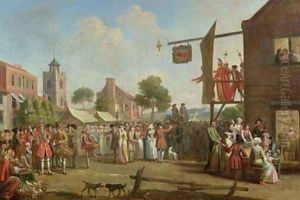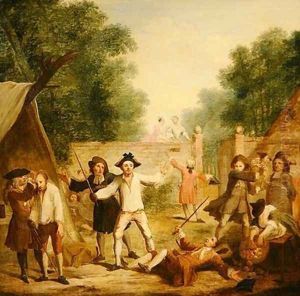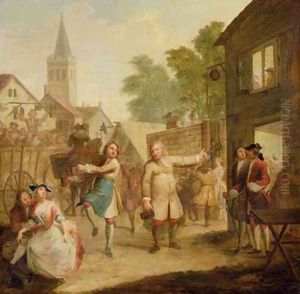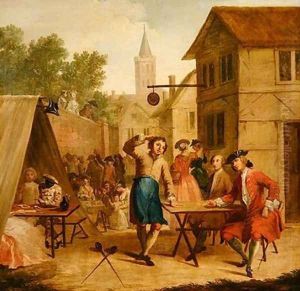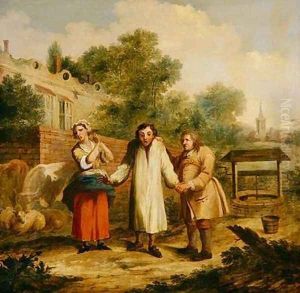John Laguerre Paintings
John Laguerre was a French-born British painter, active during the early 18th century. Born in 1688 in Paris, France, he was the son of Louis Laguerre, a prominent decorative painter who had moved from France to England during the reign of Charles II. John Laguerre was brought up in the artistic environment established by his father and was heavily influenced by his style and technique.
Laguerre's early life was spent in England, where he received his artistic training under his father's guidance. He quickly developed his own style, which was characterized by a combination of French elegance and British robustness. Laguerre was particularly noted for his theatrical and history paintings, as well as his decorative works, which included ceiling paintings, murals, and altarpieces for churches.
Throughout his career, Laguerre worked on various significant projects. He was involved in decorating several important buildings in England, such as Blenheim Palace and Marlborough House. His work also extended to the realm of theatre, where he created backdrops and scenery for plays, reflecting his interest in dramatic and narrative scenes.
Despite his contributions to British art, John Laguerre was not as successful as his father. He struggled with financial difficulties and competition from other artists. Nonetheless, he left behind a body of work that is appreciated for its vitality and baroque sensibility.
John Laguerre died in 1746 in London. His legacy, although overshadowed by the more prominent artists of his time, provides an important link between the French art of the late 17th century and the British art of the early 18th century. His works are a testament to the cross-cultural artistic exchanges that were taking place during this period and reflect the tastes and interests of the British aristocracy of his era.
